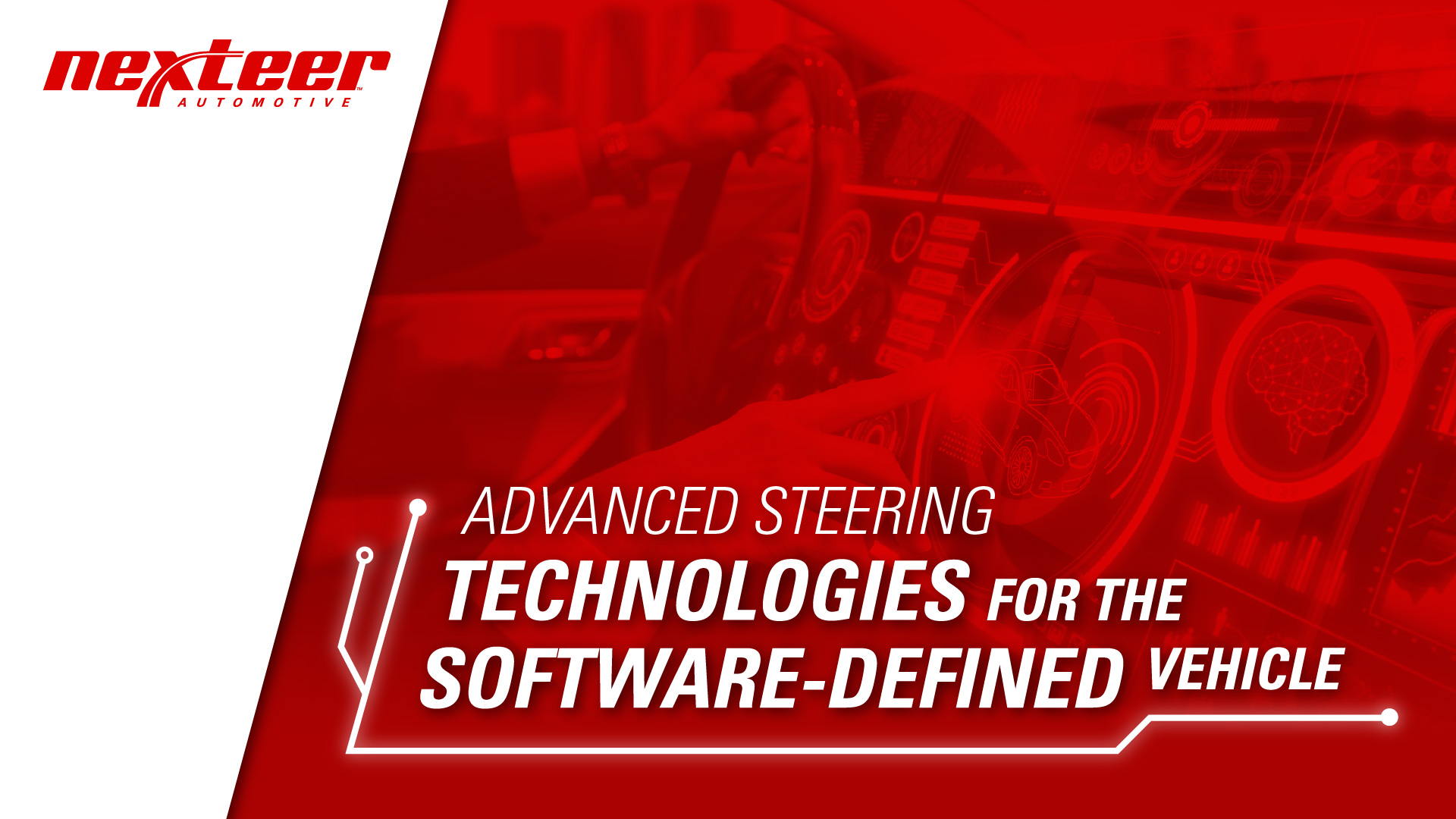Advanced Steering Technologies for the Software-Defined Vehicle
January 31, 2022

As OEMs work to introduce new, more connected vehicles with enhanced safety and performance features, software is playing a more prominent role in the driving experience. The industry’s shift toward more centralized Domain Control Units (DCUs) in place of individual Electronic Control Units (ECUs) opens new opportunities for OEMs to enhance the customer experience and improve efficiency through software-driven updates.
Previously, vehicles relied on a decentralized ECU architecture, with as many as 120 separate, hard-coded ECUs controlling each individual component and feature, such as parking assist. As we look to future generations of vehicles, OEMs will rely on a more centralized architecture of software driven DCUs to enhance the end user experience by creating features that are coordinated across multiple actuators. For example, we may see a single DCU covering all chassis functions, from steering to braking, for full motion control.
The Benefits of a Centralized Vehicle Architecture
As this software-driven model continues to advance, OEMs will be more efficient at adding functions and experiences through over-the-air (OTA) updates – much like your smartphone – rather than hardware replacements. This will also streamline suppliers’ engineering effort to create these features.
According to a white paper by Intel, having a few DCUs instead of many ECUs would allow for more efficient control, protection and maintenance of connected vehicles. They would increase cyber security by limiting access to sub-systems while creating a safe connection point to the cloud. With fewer ECUs, DCUs also create opportunities for OEMs to reduce hardware costs. Finally, vehicle owners would have the ability to update and add new software features remotely, and automakers could establish a faster time to market with fewer ECUs to test and validate. At Nexteer, we’re supporting this transition through advanced steering software for a more connected environment and centralized vehicle architecture.
Advanced Steering System Integration for the Software-Defined Vehicle
At Nexteer, we see the increased role software is playing in the industry and are working to enhance our software solutions to enable real-time safety and performance through intuitive motion control systems. In 2020, about 49 percent of Nexteer’s technical talent focused on software development, up from 21 percent in 2010. Last year, we also elevated our global Software Engineering organization to meet the ever-expanding software needs of our global OEM customers.
This centralized software team supports Electric Power Steering (EPS) systems and advanced steering feature development. In addition, the new structure supports software-related R&D projects including software solutions that could be cloud-based or reside within a centralized chassis DCU. In advanced steering systems, added features can include updates to drive modes such as adding a sport or luxury driving style and steering feel, or updates to advanced driver assistance system (ADAS) functions such as park assist, traffic jam assist and more.
Increased connectivity also offers opportunities to introduce advanced steering safety features. Vehicles can evaluate signals from the steering system, brakes or other chassis components to determine road conditions and identify hazards and can then send this information to the cloud so other vehicles have access to the same information.
We continue to drive software engineering efficiencies by maintaining common software systems across customer platforms, enabling easier technology integration and updates while maintaining flexibility to support automakers’ market diversification needs. Our current steering technology includes building blocks for future innovation, including cyber-secure advanced steering and automated features. In a more centralized vehicle architecture, maintaining common systems will be become more efficient for both suppliers and OEMs.
In one example, we’re supporting future DCU integration through CNXMotion, a joint venture with Continental, that combines our advanced steering and driver assistance technologies with Continental’s portfolio of automated driving and braking technologies, showcasing how steering and braking software may eventually reside within a single chassis domain controller.
While individual ECUs remain common today, there is no question that DCUs are gaining traction for the connected, software-defined vehicles of the future. Through advanced steering systems and software, we’re working to support this shift and help bring the benefits of connectivity, advanced safety and performance to drivers and OEMs around the world.






